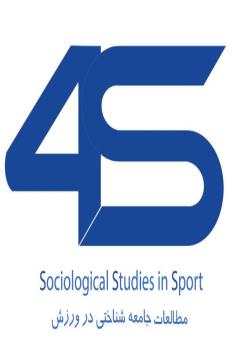مدل تصویر برند فرهنگی اجتماعی ورزشکاران ایرانی: رویکرد الگوسازی سبک زندگی
الموضوعات : Sociological studies of sports
فروغ نقوی
1
![]() ,
فرشاد تجاری
2
,
فرشاد تجاری
2
![]() ,
علی زارعی
3
,
علی زارعی
3
![]()
1 - گروه مديريت ورزشي، دانشکدۀ علوم ورزشي، واحد تهران مرکزی، دانشگاه آزاد اسلامی، تهران، ایران
2 - گروه مديريت ورزشي، دانشکدۀ علوم ورزشي، واحد تهران مرکزی، دانشگاه آزاد اسلامی، تهران، ایران
3 - گروه مديريت ورزشي، دانشکدۀ علوم ورزشي، واحد تهران مرکزی، دانشگاه آزاد اسلامی، تهران، ایران
الکلمات المفتاحية: تصویر برند, ورزشکاران ایرانی, سبک زندگی, هویت فرهنگی, تحلیل ابعادی,
ملخص المقالة :
هدف: ورزشکاران به عنوان نمادهای اجتماعی و فرهنگی، تأثیرات قابلتوجهی بر سبک زندگی و ارزشهای جامعه دارند. با این وجود، فقدان یک مدل جامع برای توصیف ابعاد مختلف تصویر برند فرهنگی اجتماعی ورزشکاران ایرانی به عنوان یک شکاف در ادبیات پژوهشی مشهود است. این پژوهش با هدف طراحی مدل تصویر برند فرهنگی اجتماعی ورزشکاران ایرانی و برطرف کردن این شکاف انجام شد.
روششناسی: این پژوهش به روش کیفی و با استفاده از نظریه پردازی داده بنیاد انجام شد. دادهها از طریق مصاحبههای نیمهساختار یافته با 35 نفر از ورزشکاران ملی، هواداران و مدیران باشگاهها جمعآوری شد. نمونهگیری به روش گلوله برفی انجام گرفت و تحلیل دادهها با استفاده از رویکرد تحلیل ابعادی شاتزمن صورت گرفت.
یافتهها: مدل پیشنهادی شامل چهار محور اصلی (تصویر فردی، تصویر اجتماعی، تصویر فرهنگی، تصویر ورزشی) و چهار بُعد کلیدی (دانش، احساسات، آگاهی، اقدام) است. این ابعاد، تعاملات میان مخاطبان و برند ورزشکاران را توضیح میدهند. بُعد دانش بر آگاهی از ویژگیهای ورزشی ورزشکاران تمرکز دارد. بُعد احساسات ارتباطات عاطفی و غرور ملی را تقویت میکند. بُعد آگاهی به شناخت هویت فرهنگی ورزشکاران و تأثیر آن بر جامعه میپردازد و بُعد اقدام رفتارهای مثبت و سبک زندگی سالم را ترویج میدهد.
نتیجهگیری: مدل ارائه شده چارچوبی بومی برای تحلیل تصویر برند فرهنگی اجتماعی ورزشکاران ایرانی است که به درک تأثیرات آنها در حوزههای مختلف کمک میکند. این مدل میتواند سیاستگذاران را در تدوین استراتژیهای هدفمند برای تقویت هویت ملی و ترویج سبک زندگی سالم یاری دهد. همچنین، طراحی برنامههای مشارکتی میان ورزشکاران و جوامع محلی برای تعامل سازنده و تأثیرگذاری پایدار توصیه میشود.


